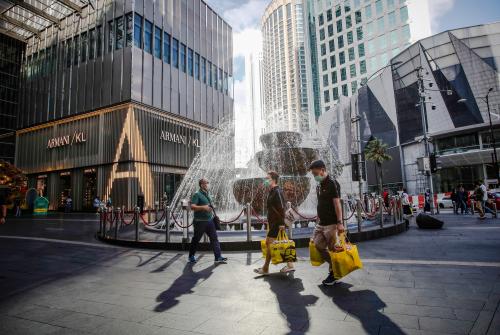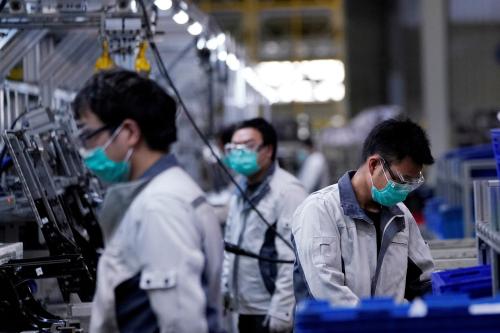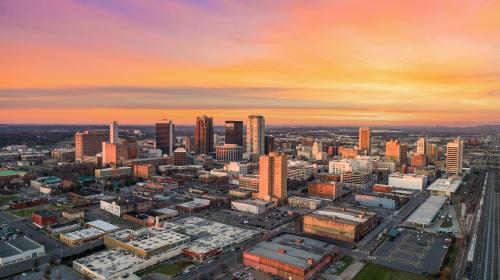Imagine you want to explain the world to your children in very simple terms. One way would be to organize the world around four income groups: the extreme poor, the vulnerable, the middle class, and the rich. The extreme poor (below $1.90 per day) suffer severe deprivation, including hunger, illiteracy, and premature death of mothers and children. The vulnerable, or near poor ($1.90-$11 per day), have escaped extreme poverty but have no extra resources to spend and are vulnerable to falling back into poverty should unemployment, drought, sickness, or some other shock affect them. The middle-class ($11-110 per day) can expect to live a decent life and has escaped the fears of extreme poverty. They are also the “consumer class,” the group whose demand powers most economies. Finally, the rich (above $110 per day) live a life in relative abundance. They could typically afford any standard consumer good.
Policymakers and the media often pay attention to the two extremes: fighting extreme poverty and preserving the glamorous life of the rich. The global community has made ending extreme poverty by 2030 one of their headline goals. But over 90 percent of the world’s population is part of the two groups in the middle, where most of the movement between the groups is happening.
Today, around 3.3 billion people belong to the global middle class. This is now the world’s largest group, which continues to rise rapidly. In fact, the middle class is on track to reach 4 billion by 2021 and 5 billion by 2027, representing 60 percent of the world’s population. Even though some people talk of a declining middle class in the West, the truth is that the global middle class is growing at an unprecedented speed. Every second, some five people enter the middle class. As people are moving up the income ladder, the group of “near poor” is declining at equal pace (Figure 1).
Figure 1: The world by income group: The action is in the middle

Why is this important?
A lot has been written about the importance of the middle class for social stability and democratic renewal. We want to show that what happens to the middle class is also of high and increasing relevance for business.
Almost any international company that wants to grow its business needs to target the middle class. There are just too few rich people in the world—currently around 190 million—to make a living by catering to them alone. If you enter the middle class, you have a little extra money to spend beyond basic needs, a toy for a child or maybe even going to a restaurant or the movies. Shifting to meat and poultry consumption, taking a vacation, and flying to see friends or family are all part of the middle-class experience, as is spending on health, education, and insurance. Globally, middle-class consumption is about $37 trillion per year, contributing more to global growth than any other element of demand.
General statements like this are well known. What is more interesting for the business world is to break down the middle class into more discrete segments. Different products appeal to different income groups. Understanding the granularity and details of the data, something that is now possible, offers far more value.
Where is the middle class rising? Asia’s economic rise will continue, and more than ever, Africa is experiencing a strong demographic momentum, and economies in the Americas and in Europe are also expanding, albeit at a much slower pace.
Key results of our data modeling:
- By mid-2017, there were 3.5 billion people in the middle and upper class, rising to 5.6 billion by 2030 (increase of roughly 60 percent).
- The rising middle class is predominantly an Asian phenomenon: 87 percent of the next billion middle-class entrants will be Asians.
- If a company has a billion customers today (earning above $11 purchasing power parity per day), then it should be able to attract 1.6 billion customers by 2030. But retaining global market share will depend mainly on attracting the new entrants to the middle class, who are overwhelmingly in China and India.
- The global middle class market will also shift toward the lower end as Americans and Europeans graduate out, becoming rich, and are replaced by lower spending Asians. This trend only reverses after about six years, and then growth in Asia will steadily expand the spending power of the average middle class consumer.
Figure 2: The next billion middle-class consumers will be 87 percent Asian

Source: World Data Lab
Real-time data models that look forward instead of only backward will be critical to help policymakers and business alike. It is thus surprising that so much effort is put into fine-tuning data that is often half a decade old instead of pushing harder to provide better estimates for today and tomorrow. These projections are a first attempt to provide real-time estimates on which policymakers and businesses can act. But it is only a first step, the tip of a data mountain, which can be disaggregated sub-nationally by age, gender, educational level, and many other relevant characteristics.
Note: We thank Martin Hofer for research assistance. If you are interested in the granular data models behind these middle-class projections, please direct your requests to [email protected]








Commentary
A golden age for business? Every second five people are entering the global middle class
July 27, 2017